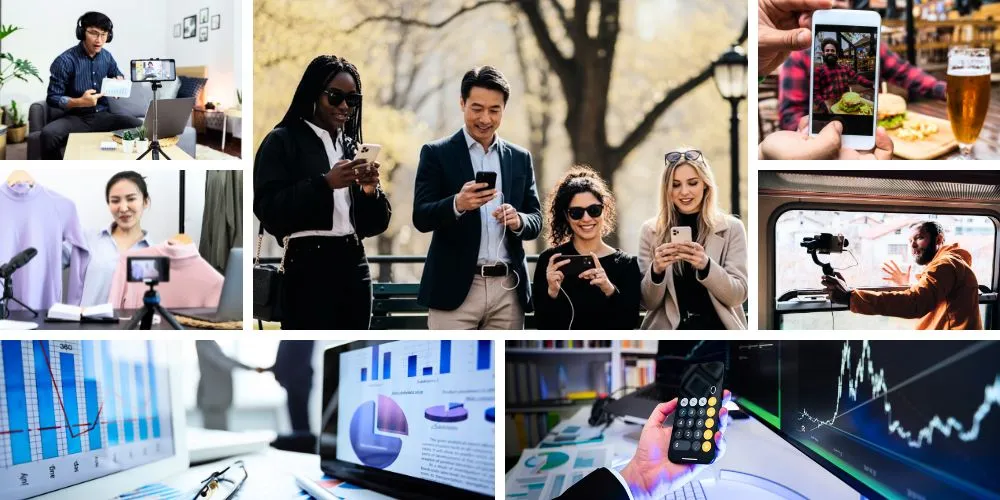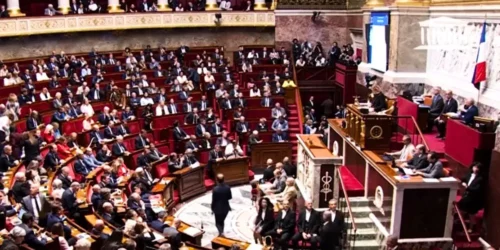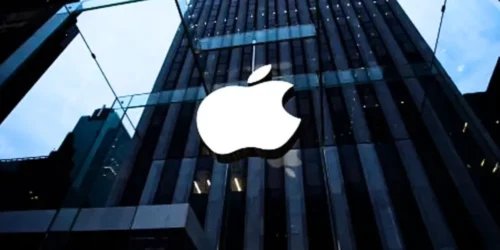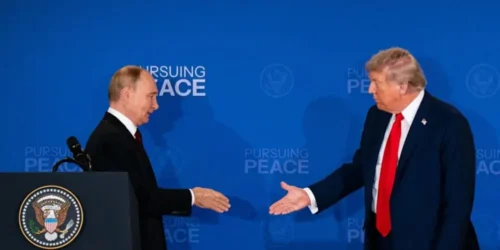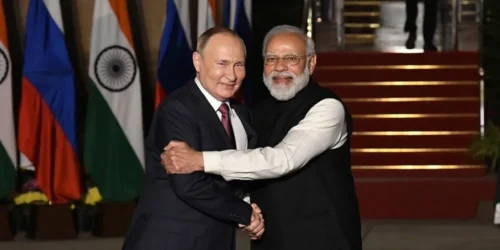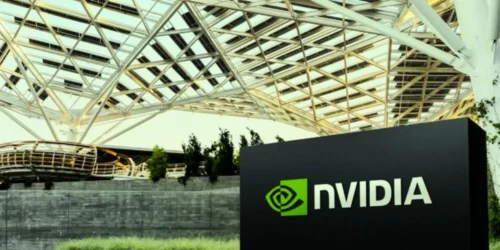If you’re a marketer in the 21st century, you know the feeling. It’s the sensation of shouting into a hurricane. You spend hours crafting the perfect message, polishing your creativity, and allocating your budget, only to push it out into the chaotic, deafening roar of the internet. You’re competing with everything all at once: breaking news, viral dance crazes, political firestorms, and an endless stream of cat videos. The old advertising playbook—find the biggest megaphone and shout the loudest—feels increasingly broken.
For a while, influencer marketing seemed like the silver bullet. Instead of buying ad space, you could borrow someone else’s megaphone. Brands flocked to celebrities and digital superstars with millions of followers, paying staggering sums for a single, glossy Instagram post. It was the digital equivalent of a Super Bowl commercial: a massive, expensive fireworks display designed to capture as many eyeballs as possible.
But a funny thing happened on the way to the checkout. The audience got smarter. They grew tired of the generic, #sponsored posts that felt less like genuine recommendations and more like hostage videos. Engagement rates on mega-influencer accounts plummeted as their audiences ballooned, becoming vast, shallow oceans of passive viewers. The authenticity that made influencer marketing so potent in the first place was being eroded by the very scale that brands were paying for. The fireworks were impressive, but they weren’t warming anyone up.
This crisis of confidence has sparked a quiet revolution. Marketers are beginning to realize that the goal isn’t to find the biggest megaphone but the most trusted one. They are turning away from the dazzling wattage of celebrity endorsements and toward the warm, focused glow of smaller, more dedicated communities. They are discovering the power of the micro-influencer.
This is a case study about return on investment (ROI), but it’s not just about the numbers. It’s about a fundamental shift in how we think about influence, trust, and connection in the digital age. We will dissect why the old model is cracking and explore the anatomy of micro-influencer power. We will build a practical, multi-layered framework for measuring the true ROI—from hard sales figures to the invaluable currency of user-generated content and market intelligence. This is a deep dive into a strategy that doesn’t just rent an audience but builds a community, one authentic conversation at a time. Forget the fireworks; it’s time to light the lanterns.
The Problem with ‘Big’ – Why the Old Influencer Model is Cracking
To understand the rise of the micro-influencer, we must first examine the promise of the mega-influencer. The logic seemed so simple: more followers equals more reach, and more reach equals more results. It was a philosophy built for a boardroom presentation, easily digestible and impressive in its scale. But on the ground, in the messy reality of social media feeds, the model began to show significant stress fractures.
The Authenticity Crisis: The ‘Ad-Shaped Object’
Think about the last time a close friend, someone whose taste you genuinely trust, raved about a new restaurant, a gripping book, or a fantastic pair of headphones. You probably listened intently. You might have even made a purchase based on their recommendation. Their endorsement carried weight because it was born from genuine enthusiasm, not a transaction.
Now, imagine that same friend suddenly started speaking like a press release. Every conversation is peppered with brand names, talking points, and awkward segues to a new protein powder or mattress. You’d feel a sense of betrayal or at least a powerful cringe. The trust would evaporate.
This is the core of the authenticity crisis plaguing the mega-influencer marketing industry. When an account with five million followers posts a perfectly lit, professionally shot photo of a user holding a bottle of soda with a caption meticulously crafted by a marketing team, users don’t see a recommendation. They see an advertisement. They see an “ad-shaped object” masquerading as content, and their internal ad-blockers go up instantly.
Audiences are not naive. They know that a seven-figure deal is behind that post. They know the celebrity might not even use the product. The transaction is transparent, and it shatters the illusion of a peer-to-peer recommendation. The content becomes sterile, predictable, and devoid of the personal passion that creates real influence. A 2019 study by the influencer marketing agency Mediakix found that audience engagement rates steadily decrease as an influencer’s follower count increases, a direct statistical rebuke to the “bigger is better” philosophy. The mega-influencer isn’t a friend giving advice; they’re a celebrity spokesperson reading from a script, and the audience knows the difference.
The Engagement Paradox: A Kingdom of Ghosts
A follower count is, on its own, a vanity metric. It’s a number that looks impressive on a slide but often signifies very little about the health or attentiveness of an audience. Mega-influencers often face the “Engagement Paradox”: their reach is vast, but their engagement is shallow.
An account with millions of followers is often an amalgamation of bots, inactive accounts, giveaway chasers, and casual, drive-by follows. The percentage of that audience that sees let alone interacts with, any given post is shockingly small. Algorithms on platforms like Instagram and TikTok prioritize content with high initial engagement. If a post goes live and is met with a collective shrug from a largely passive audience, the platform’s algorithm will suppress its reach, ensuring even fewer people see it.
Compare this to a micro-influencer with 25,000 followers. This audience is smaller, but it’s often fiercely loyal and highly engaged. They didn’t follow on a whim; they followed because they share a specific passion, whether it’s for zero-waste living, 1980s synth music, or fly fishing in Montana. When this influencer posts, the audience listens. They comment with thoughtful questions. They share the post with friends who share the same interests. They participate in a conversation.
A typical engagement rate (likes and comments divided by followers) for a mega-influencer might hover around 1-2%. For a micro-influencer, rates of 5-10% are common and sometimes even higher. A brand paying for a mega-influencer is essentially renting a stadium where most of the crowd is looking at their phones. A brand partnering with a micro-influencer is joining an intimate, lively dinner party where everyone is hanging on the host’s every word.
The Cost Conundrum: Paying for Water in the Ocean
The price tag for a single post from a top-tier influencer can easily run into six or even seven figures. This astronomical cost creates immense pressure for a campaign to deliver a proportional return, a burden it can rarely bear. The justification for the cost is “reach,” but as we’ve seen, that reach is often an illusion. You are paying for millions of followers, but you are only truly reaching a small fraction of them, and an even smaller fraction are genuinely engaged.
Let’s do some simple math. Suppose a brand pays a mega-influencer $100,000 for one Instagram post to their 5 million followers. With a 1.5% engagement rate, that post gets 75,000 “engagements” (mostly likes). The cost per engagement is $1.33.
Now, consider an alternative strategy. The brand takes that same $100,000 and partners with 100 micro-influencers, each with an average of 20,000 followers, for $1,000 per influencer.
- Total Potential Reach: 100 influencers x 20,000 followers = 2,000,000 followers. While smaller than the mega-influencer’s audience, it’s far more targeted.
- Total Engagements: Assuming a conservative 6% engagement rate, the campaign generates 120,000 engagements.
- Cost Per Engagement: $100,000 / 120,000 = $0.83.
On this simple metric alone, the micro-influencer campaign is significantly more efficient. But this calculation doesn’t even account for the quality of that engagement—the thoughtful comments, the direct messages, the shares within niche communities. The mega-influencer strategy is a high-risk, high-cost bet on a single, fragile point of contact. The micro-influencer strategy is a diversified, cost-effective portfolio of authentic connections.
The old model is cracking because it was built on a superficial understanding of influence. It mistook attention for trust, followers for community, and reach for resonance. As brands become more sophisticated in their demand for real, measurable results, they are turning toward a model that prioritizes the very things the mega-model discarded: authenticity, niche expertise, and genuine conversation.
The Micro-Anatomy of Trust – Deconstructing the Power of Niche
What is it, exactly, that gives a micro-influencer their disproportionate power? The magic isn’t in their follower count; it’s in the very fabric of the relationship they have with their audience. To understand their ROI, we have to dissect this relationship and see why it’s such a fertile ground for brands.
The “Digital Friend” Phenomenon
The most powerful force at play is the perception of the micro-influencer as a peer. They are not distant, airbrushed celebrities living in Hollywood mansions. They are people who look, talk, and act like us—or at least, like a cooler, more knowledgeable version of ourselves. Their content is often shot on a smartphone in their kitchen, backyard, or workshop. It’s relatable, attainable, and personal.
This relatability fosters a sense of intimacy and trust that mega-influencers simply cannot replicate. Following a micro-influencer feels less like following a celebrity and more like being part of a friend group. They often reply to comments personally. They answer DMs. They conduct polls and solicit their audience’s opinions. They create a two-way dialogue, building a community around a shared interest.
When this “digital friend” recommends a product, it doesn’t trigger our internal ad blocker. It lands with the weight of a genuine suggestion from someone we trust. They aren’t just showing a product; they are integrating it into the life their audience already admires and relates to. The endorsement becomes a natural extension of their brand, not a jarring interruption. This psychological framing is the bedrock of their effectiveness.
Niche Authority as a Superpower
Micro-influencers are rarely generalists. They are specialists. They are the go-to person for a very specific topic.
- The vegan chef who has perfected a plant-based brioche.
- The woodworker who specializes in Japanese joinery techniques.
- The financial advisor who helps millennials manage student loan debt.
- The travel blogger who exclusively visits and reviews dog-friendly hotels.
Their authority doesn’t come from fame; it comes from demonstrated expertise and passion. Their audience has self-selected to be there precisely because they care deeply about that specific niche. For a brand operating in that space, this is pure gold. You are not just reaching people; you are reaching the right people—a pre-qualified, highly invested audience that is actively seeking information and recommendations on that very topic.
Imagine you sell high-end, ethically sourced coffee beans. You could pay a lifestyle celebrity to hold a bag of your coffee, reaching millions of people who may or may not drink coffee. Or, you could partner with ten micro-influencers who run dedicated coffee review accounts, each with 15,000 followers who obsess over grind size, brewing methods, and flavor notes. The second option provides a direct line to your perfect customer, delivered by a voice they already trust on that exact subject. The niche is the ultimate targeting filter.
Engagement as a Conversation, Not a Broadcast
We touched on the higher engagement rates of micro-influencers, but the quality of that engagement is just as important. On a mega-influencer’s post, the comments section is often a wasteland of spam, one-word replies (“Wow!”), and fire emojis. On a micro-influencer’s post, it’s a town hall.
You will see followers asking specific, detailed questions about the product: “How does that fabric feel after a few washes?” “Does that camera lens work well in low light?” “What’s the best substitute for that ingredient if I have a nut allergy?” Even more importantly, the influencer often takes the time to answer these questions. This public conversation serves as a dynamic, real-time FAQ, overcoming purchase barriers for dozens of other potential customers who are quietly watching.
This conversational depth is an incredibly valuable asset. It signals to both the audience and the platform algorithms that the content is valuable and engaging, further boosting its reach. For the brand, it’s a goldmine of consumer insight, revealing pain points, questions, and desires straight from the mouths of their target demographic.
Cost-Effectiveness and the Power of Diversification
The lower cost of partnering with micro-influencers is not just about saving money; it’s about enabling a smarter, more resilient strategy. Instead of making a single, high-stakes bet on a celebrity, a brand can build a portfolio of micro-influencer partnerships. This approach, which we’ll call “micro-diversification,” has several powerful advantages:
- A/B Testing on a Grand Scale: With a portfolio of influencers, you can test different messages, calls-to-action, and product features across various demographics. You can see which talking points resonate most with a hiking community versus an urban fashion community, providing invaluable data for future marketing efforts.
- Mitigating Risk: If one mega-influencer campaign flops, your entire budget is wasted. If one of your 20 micro-influencer partnerships underperforms, it’s a small, manageable loss that is offset by the success of the others. The strategy is inherently more resilient.
- Authentic Reach Amplification: When multiple trusted voices in a niche simultaneously discuss the same product, it creates a powerful echo chamber effect. It signals to the community that this product is genuinely noteworthy. It moves from being a single sponsored post to a “moment” or a trend within that community.
- Content Treasury: Instead of getting one or two polished photos from a single campaign, you get a diverse library of authentic, relatable content from dozens of different creators that you can then repurpose for your social media, email newsletters, and even paid ads (with permission).
This anatomy of trust—built on peer-like relationships, niche authority, deep conversation, and strategic diversification—is the engine that drives micro-influencer ROI. It transforms marketing from a transactional shout to a relational conversation, creating value that extends far beyond a simple sales spike.
The ROI Equation – A Practical Framework for Measuring Success
The most persistent criticism of influencer marketing has always been the difficulty of measuring its ROI. For years, brands were sold on fuzzy metrics like “exposure” and “brand awareness,” which are notoriously hard to connect to the bottom line. But with micro-influencers, the link between action and result is far clearer and more measurable.
To truly understand the ROI, we must move beyond a simplistic “money in, money out” calculation. The return is multi-layered, encompassing direct revenue, asset creation, and valuable market intelligence. Let’s build a comprehensive framework for this, using a fictional case study to bring it to life.
Our Case Study: “Artisan Kettle,” a Direct-to-Consumer Popcorn Brand
Imagine we are the marketing team for Artisan Kettle, a new startup selling gourmet, small-batch popcorn with unique flavors like “Smoked Paprika & Lime” and “Rosemary Truffle.” Our target audience consists of foodies, home entertainers, and individuals seeking elevated snack options. Our budget for this launch campaign is $20,000.
The old model would suggest spending this on one mid-tier food celebrity. Instead, we’ll use our micro-diversification strategy. We will partner with 40 micro-influencers in the food, home decor, and movie-lover niches.
- Average Follower Count: 25,000
- Total Potential Reach: 1,000,000
- The Deal: Each influencer receives a cash payment of $400 and a “Movie Night” kit worth $100 (total value of $500 per influencer).
- Total Investment: 40 influencers x 500 = 20,000
Now, let’s break down how we measure the return on that $20,000 investment.
Layer 1: The Hard ROI – Tracking Direct Revenue and Leads
This is the bedrock of any ROI calculation. We need to draw a direct, unambiguous line from the influencer’s post to a customer’s purchase.
- Method 1: Unique Discount Codes: We provide each of our 40 influencers with a unique, trackable discount code (e.g., “SARAHSNACKS15,” “KEVINSCHOICE15”). This is the cleanest method. Our e-commerce platform (like Shopify) can track exactly how many times each code is used and the total revenue generated from each.
- Method 2: Affiliate Links / UTM Parameters: We can provide influencers with custom URLs (affiliate links or links with UTM parameters) to place in their bio or stories. These links track every click-through and subsequent purchase, allowing us to attribute sales directly back to the source.
Artisan Kettle’s Results (Hypothetical):
After a 30-day campaign period, our dashboard shows that the 40 unique codes were used a total of 625 times. The average order value for these purchases was $40.
Total Direct Revenue: 625 orders x 40/order = 25,000.
Now we can calculate our Return on Ad Spend (ROAS), the most fundamental ROI metric:
ROAS = (Revenue Generated / Total Investment) = $25,000 / $20,000 = 1.25
For every $1 we spent, we got $1.25 back in direct sales. A positive ROAS is a clear win, but the story doesn’t end here. This is just the first layer.
Layer 2: The Asset ROI – Valuing User-Generated Content (UGC)
As part of our agreement, we stipulated that we have the right to repurpose the content created by our 40 influencers. Each influencer created, on average, one high-quality feed post and three-story frames.
- Total Assets Acquired: 40 high-quality photos/reels + 120 story clips.
This is a massive trove of authentic, professionally styled content that is neither overly formal nor overly casual. What is this worth? We can quantify it by calculating the Content Replacement Cost. What would it have cost us to create this content ourselves?
- Hire a food photographer for a 2-day shoot: $4,000
- Rent a studio/kitchen space: $1,000
- Food stylist and props: $1,500
- Hire models/actors to create a “lifestyle” feel: $2,500
- Post-production and editing: $1,000
- Estimated Cost to Produce 40 Photos In-House: $10,000+
Suddenly, our $20,000 investment not only generated $25,000 in sales but also gave us a 10,000 content library for free. We can now use these diverse, authentic images on our website, in email campaigns, and even in paid social ads (where UGC-style creative often outperforms slick, branded content).
When we factor this in, our “value-based” ROI looks much healthier:
Value-Based ROI = (Direct Revenue + Asset Value) / Investment = ($25,000 + $10,000) / $20,000 = 1.75
Layer 3: The Engagement & Awareness ROI – Quantifying Reach and Interaction
While “awareness” can feel fuzzy, we can still attach concrete numbers to it. We need to measure the campaign’s performance beyond just the people who made an immediate purchase.
- Impressions: The total number of times the content was displayed to users.
- Reach: The number of unique users who saw the content.
- Engagements: The total number of likes, comments, shares, and saves.
- Cost Per Engagement (CPE): Total Investment / Total Engagements.
- Cost Per Mille (CPM): (Total Investment / Total Impressions) x 1000.
Artisan Kettle’s Results (Hypothetical):
- Total Impressions: 2,500,000
- Total Engagements: 150,000 (an average 6% engagement rate)
- CPM Calculation: CPM Calculation: (20,000 / 2,500,000) x 1000 = 20,000 / 2,500,000) x1000 = 8.00 CPM. This is a highly competitive rate for reaching such a targeted audience, often beating platform ad costs.
- CPE Calculation: 20,000 / 150,000 = 0.13 CPE. This is an incredibly efficient price for a meaningful interaction with a potential customer.
These metrics demonstrate the campaign’s effectiveness in capturing attention. We reached millions of people in our target demographic for a fraction of the cost of traditional advertising, and we paid just 13 cents every time someone actively engaged with our brand. This builds the top of the funnel, creating a pool of future customers who are now aware of Artisan Kettle and have a positive first impression of the brand.
Putting it all Together: The Holistic ROI Report.
When the Artisan Kettle team reports on this campaign, they don’t just present a single number; they also provide a comprehensive analysis. They present a holistic dashboard:
- Executive Summary: The $ 20,000 campaign was a resounding success, generating positive returns across sales, content creation, and brand awareness.
- Financial ROI:
- Investment: $20,000
- Direct Revenue: $25,000
- ROAS: 1.25x
- Asset ROI:
- Content Acquired: 40+ high-quality lifestyle photos/reels.
- Estimated Asset Value: $10,000
- Total Value-Based Return: $35,000 (1.75x ROI)
- Performance ROI:
- Total Impressions: 2.5 Million
- Targeted CPM: $8.00
- Total Engagements: 150,000
- Cost Per Engagement: $0.13
This multi-layered approach transforms the conversation from “Did we make our money back?” to “Look at the incredible, multifaceted value we generated from this strategic investment.” It proves that the ROI of micro-influencer marketing isn’t a single data point but a constellation of values that illuminates the entire marketing funnel.
Beyond the Numbers – The Qualitative ROI and Long-Term Value
A truly comprehensive case study of ROI must acknowledge that not all value can be neatly fit into a spreadsheet. The most profound benefits of a well-executed micro-influencer strategy are often qualitative, planting seeds that grow into long-term, durable brand equity. To ignore these “softer” returns is to miss half the story.
Market Research and Product Feedback on Tap
The comments section of a micro-influencer’s post is one of the most honest and unfiltered focus groups a brand could ever hope for. This is where your target customers are having a public conversation about your product.
Let’s revisit our Artisan Kettle case study. In the comments of their 40 influencer partners, the marketing team noticed a recurring theme:
- “The Rosemary Truffle is amazing! I wish it came in a bigger bag for parties.”
- “My kids are allergic to nuts. Is your facility nut-free? This should be on the label!”
- “I saw you have savory flavors. Are you planning to launch any sweet ones like caramel or cinnamon?”
This isn’t just engagement; it’s priceless market intelligence. This feedback is a direct line to consumer desire, revealing opportunities for new product development (a larger “party size” bag), improved messaging (clearer allergen information on packaging), and future line extensions (a “Sweet & Salty” collection).
A traditional company might spend tens of thousands of dollars on surveys and focus groups to get this kind of insight. With micro-influencer marketing, it’s a built-in, organic byproduct of the campaign. The long-term ROI of developing a product that the market is explicitly asking for is immense.
Building a Community, Not Just Renting an Audience
A one-off campaign with a mega-influencer is a transaction. A sustained program with a network of micro-influencers is a relationship. By identifying the best-performing and most enthusiastic creators from a campaign, a brand can cultivate them into long-term brand ambassadors.
Artisan Kettle could identify the 10 influencers whose codes drove the most sales and whose content was the most authentic. They could then invite them into an exclusive “Artisan Kettle Insiders” program. This program might include:
- Early access to new flavors.
- A small quarterly retainer for creating ongoing content.
- An invitation to a virtual tasting event with the company’s founder.
This transforms the relationship from a simple fee-for-service to a genuine partnership. These influencers become a passionate, distributed marketing team, an army of advocates who will defend the brand, promote it organically, and provide a constant stream of authentic content and feedback. The ROI of this loyal community is a compounding asset, growing in value over time and providing a defensive moat against competitors.
The “Echo Effect” and SEO Authority
A mega-influencer’s post has a very short half-life. It appears to get a burst of attention, but is then quickly buried by the endless scroll of the feed. The content created by a network of micro-influencers has a much longer and more complex life.
This is the “Echo Effect.” A post from a trusted niche creator gets shared by their followers. It gets discussed in private Facebook groups and on Reddit forums dedicated to that niche. Other, even smaller “nano-influencers” might see the trend and buy the product themselves, creating another wave of organic content. The initial campaign acts as a stone thrown into a pond, with the ripples of conversation and secondary content spreading long after the initial splash.
Furthermore, this activity has tangible SEO benefits. When influencers and their followers write blog posts reviewing the product, they create high-quality, relevant backlinks to the brand’s website. Search engines like Google see this activity from trusted, niche-specific sources as a powerful signal of authority and relevance. Over time, this can significantly boost the brand’s ranking for key search terms (e.g., “gourmet popcorn,” “unique snack gifts”), driving a steady stream of highly qualified organic traffic for months and years to come—a long-term ROI that is almost impossible to achieve with a single celebrity post.
The qualitative ROI is about playing the long game. It’s about seeing a micro-influencer campaign not as a short-term sales tactic but as a long-term brand-building strategy. The value lies in the communities you build, the insights you gather, and the digital footprint you create. These returns are harder to quantify on a 30-day report, but they are often the most valuable and enduring of all.
Conclusion: The Future is Niche, and the ROI is Real
We began with the image of a marketer shouting into a hurricane, struggling to be heard above the noise. The mega-influencer model offered a bigger megaphone, but it was a blunt instrument that often broadcasts a sterile message to a distracted crowd. The ROI was fleeting, expensive, and difficult to prove. The micro-influencer revolution offers a radically different approach. It’s a strategy of precision over power, of connection over eyeballs. It’s about understanding that true influence isn’t about the size of one’s following but the depth of one’s trust.
As we’ve seen through our framework and the Artisan Kettle case study, the ROI of this approach is both quantifiable and profound. It delivers a direct, measurable return on ad spend, often outperforming traditional digital ads. It generates a treasure trove of authentic, high-performing content at a fraction of the cost of in-house production. It provides a direct, unfiltered line to the heart of your target market, offering priceless consumer insights. And most importantly, it lays the foundation for a durable, long-term community of brand advocates.
The shift required is one of mindset. Marketers must evolve from being campaign managers to community cultivators. They must stop chasing the vanity of a million followers and start valuing the power of a thousand true fans. They must see their budget not as ammunition for a single, loud blast but as seeds to be planted in dozens of fertile, niche gardens.
A quiet revolution is unfolding in the DMs, comments sections, and passionate niche communities across the internet. The ROI is not a myth; it is a multi-layered, demonstrable reality. For the brands willing to listen more than they shout, the returns—both on the spreadsheet and in the hearts of their customers—are waiting.

